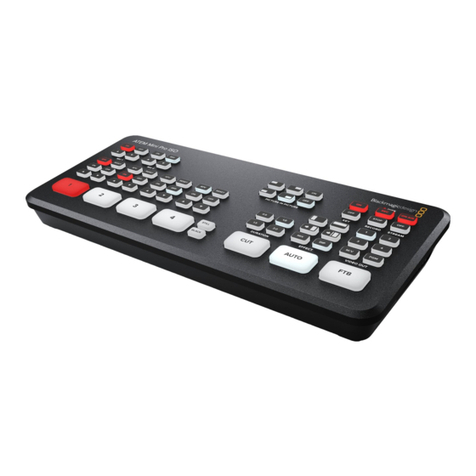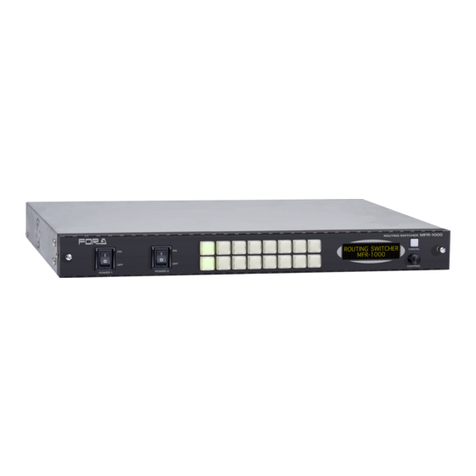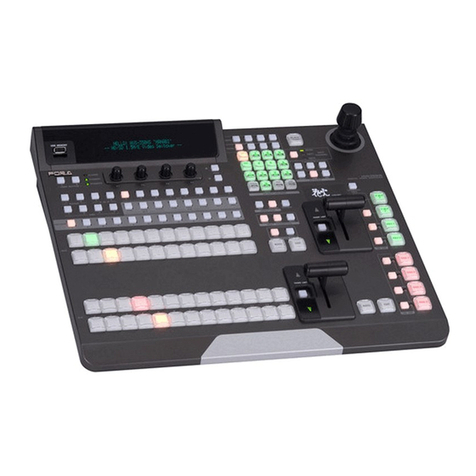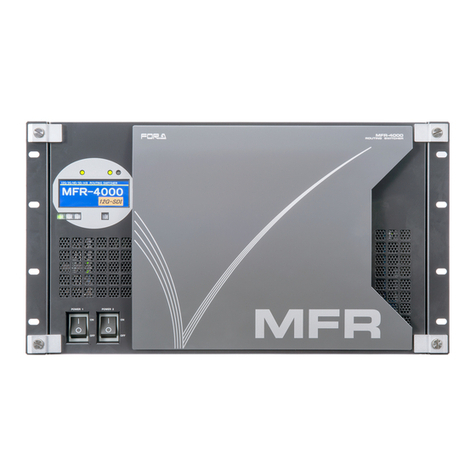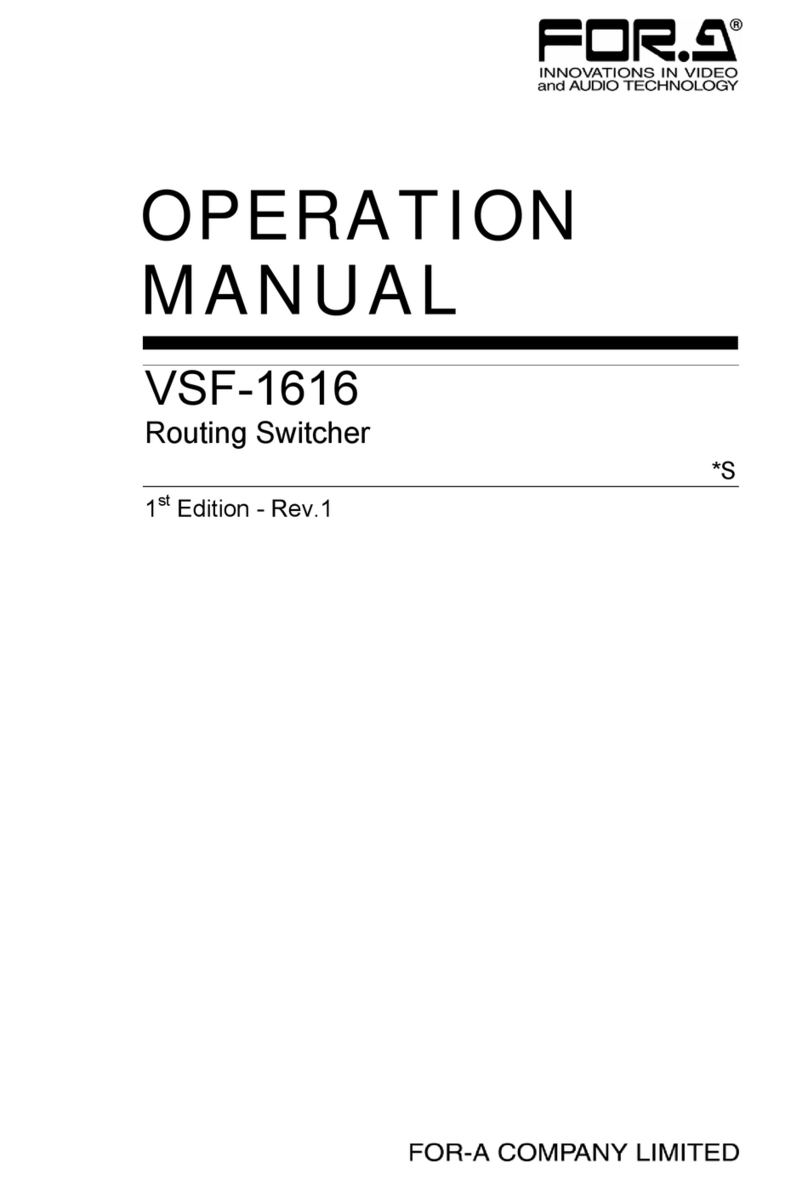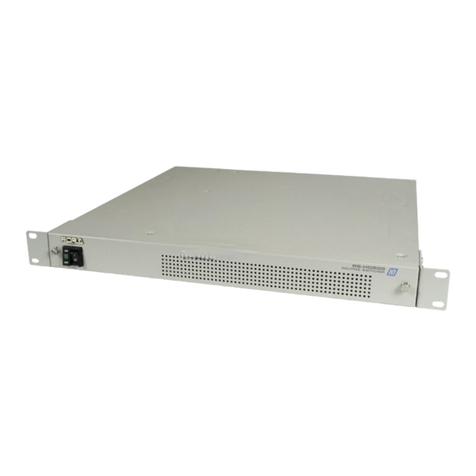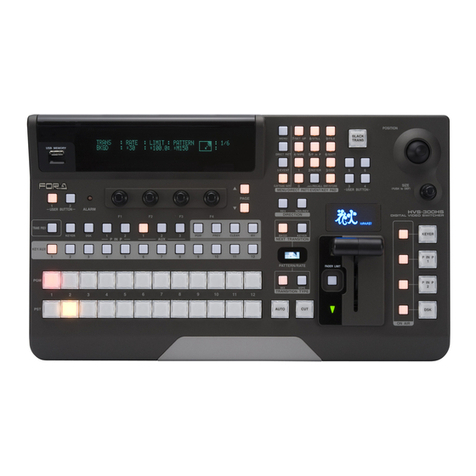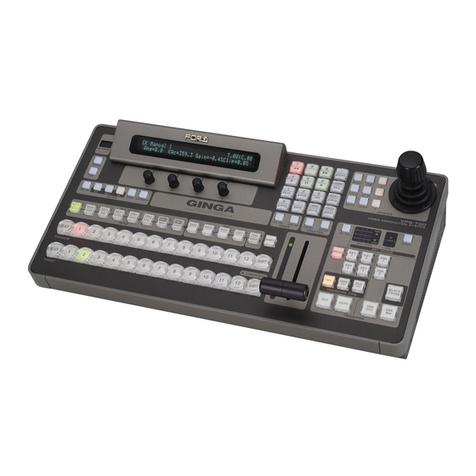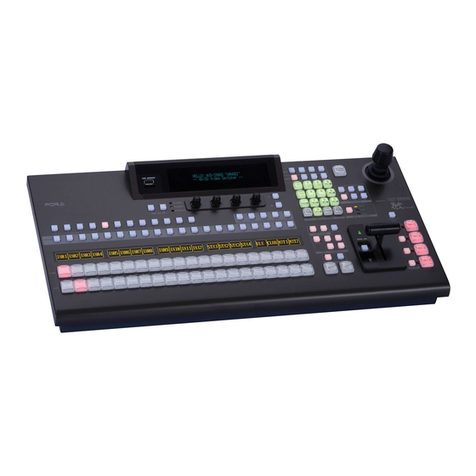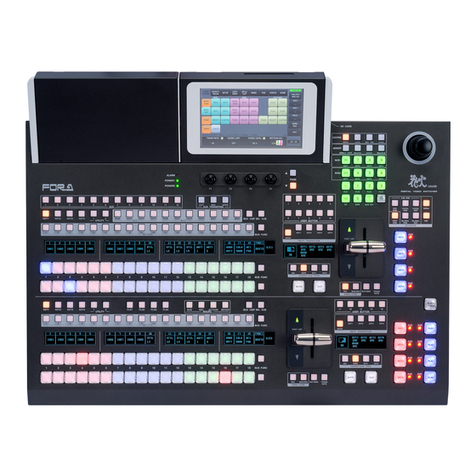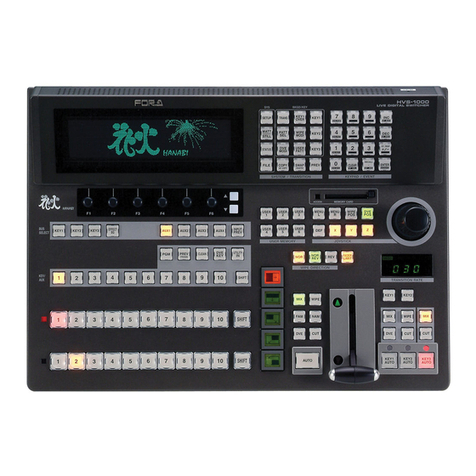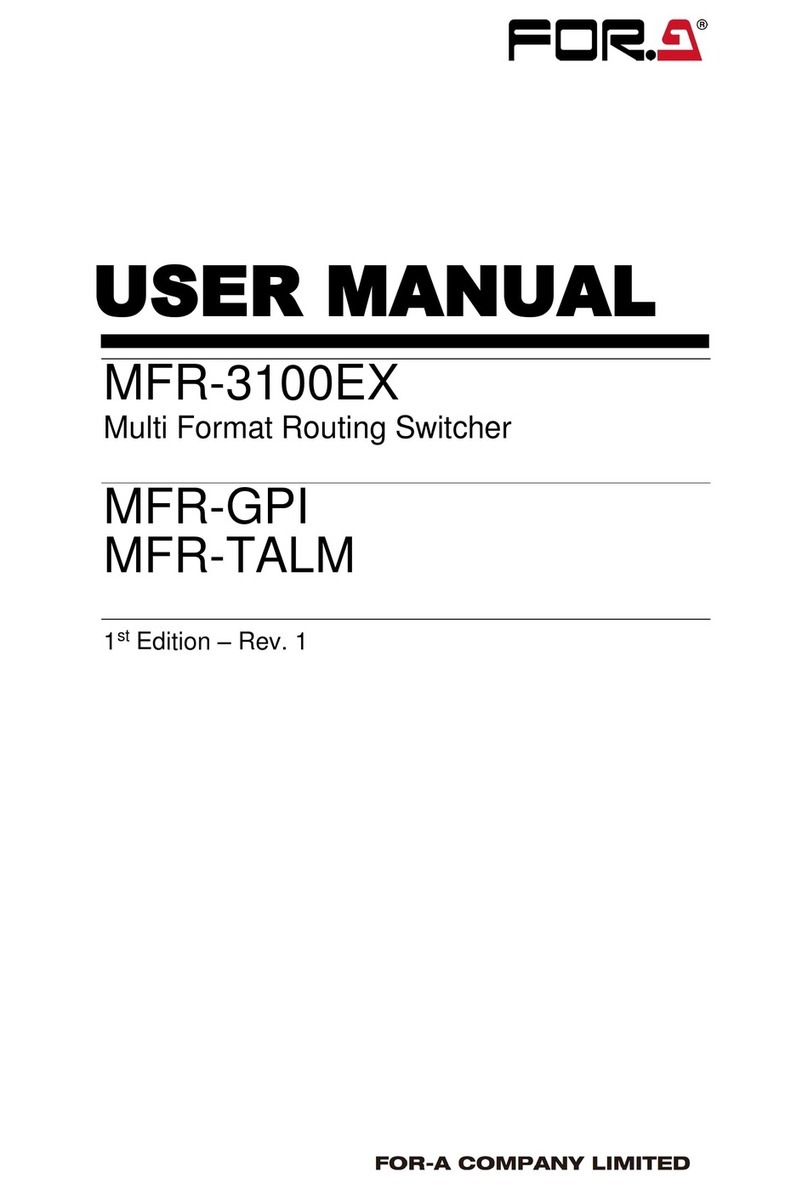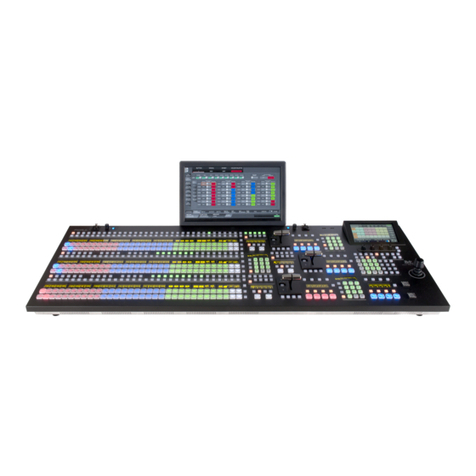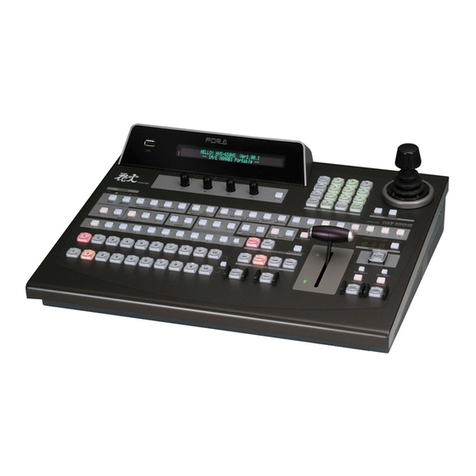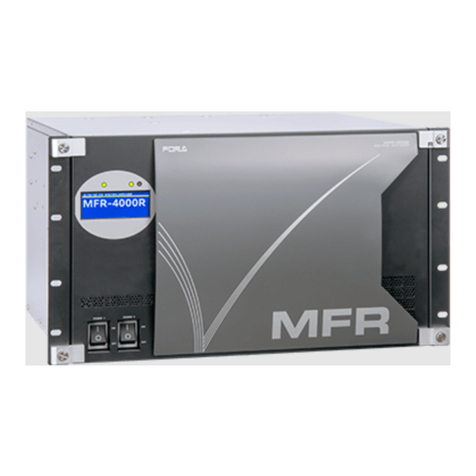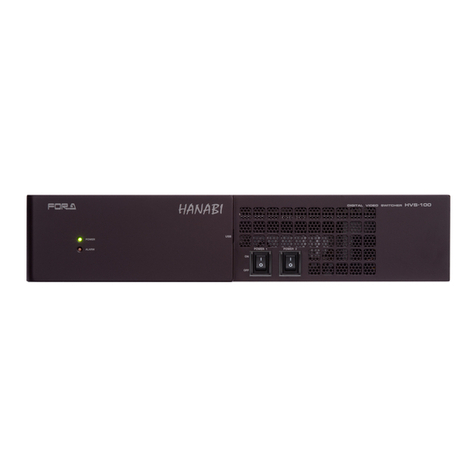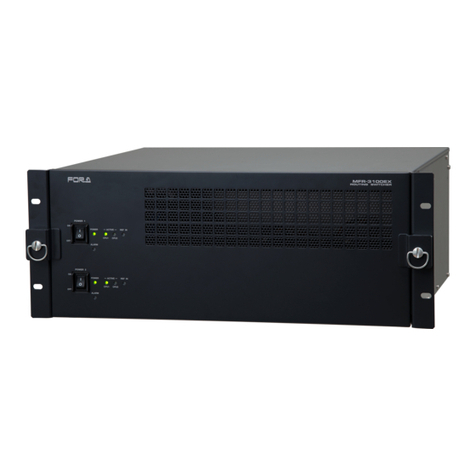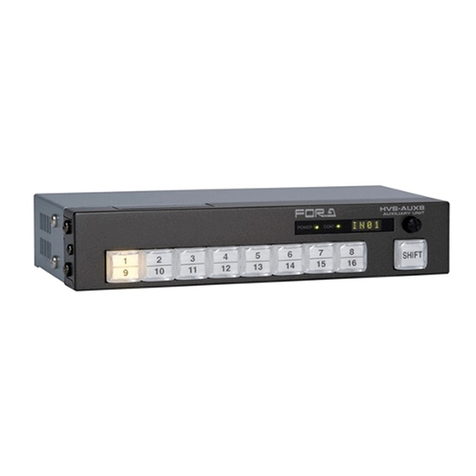
7-3. Remote Control via RU-3000 ........................................................................................... 27
7-4. VSF/TG Linkage............................................................................................................... 28
8. Serial Control............................................................................................................................ 31
8-1. General description .......................................................................................................... 31
8-2. RS-232C/RS-422 connector............................................................................................. 31
8-2-1. RS-232C Interface.................................................................................................... 32
8-2-2. RS-422 Interface ...................................................................................................... 33
8-3. Communication Parameters............................................................................................. 34
8-4. Protocol ............................................................................................................................ 34
8-5. Command Logic ............................................................................................................... 35
8-6. Operational Flow .............................................................................................................. 36
8-7. Control Commands .......................................................................................................... 37
8-7-1. Crosspoint Switching Commands............................................................................. 37
8-7-2. Preset Switching Commands ................................................................................... 38
8-7-3. Status Request Commands...................................................................................... 39
8-7-4. Response Commands.............................................................................................. 40
8-7-5. Control Commands and ASCII Codes ...................................................................... 42
9. Control by RS Commands........................................................................................................ 45
9-1. RS Command Format ...................................................................................................... 46
9-2. Salvo Function.................................................................................................................. 48
9-2-1. Clearing the Salvo Preset Table ............................................................................... 49
9-2-2. Recording the Salvo Crosspoints ............................................................................. 49
9-2-3. Clearing the Salvo Crosspoints ................................................................................ 50
9-2-4. Salvo Registration .................................................................................................... 50
9-2-5. Salvo Calling ............................................................................................................51
9-2-6. Checking the Salvo Registered Settings .................................................................. 52
9-3. Sequence Switching.........................................................................................................53
9-3-1. Sequence Switching Registration............................................................................. 53
9-3-2. Starting the Sequence Switching.............................................................................. 54
9-3-3. Stopping Sequence Switching.................................................................................. 55
9-3-4. Confirming Sequence Switching............................................................................... 55
9-4. Auto Salvo Switching........................................................................................................ 56
9-4-1. Auto Salvo Switching Registration............................................................................ 56
9-4-2. Starting Auto Salvo Switching................................................................................... 57
9-4-3. Stopping Auto Salvo Switching................................................................................. 57
9-4-4. Confirming Auto Salvo Switching.............................................................................. 58
9-5. Chop Switching ................................................................................................................ 59
9-5-1. Chop Switching Registration .................................................................................... 59
9-5-2. Starting Chop Switching ........................................................................................... 60
9-5-3. Stopping Chop Switching ......................................................................................... 61
9-5-4. Confirming Chop Switching ...................................................................................... 61
9-6. Alarm Switching................................................................................................................ 62
